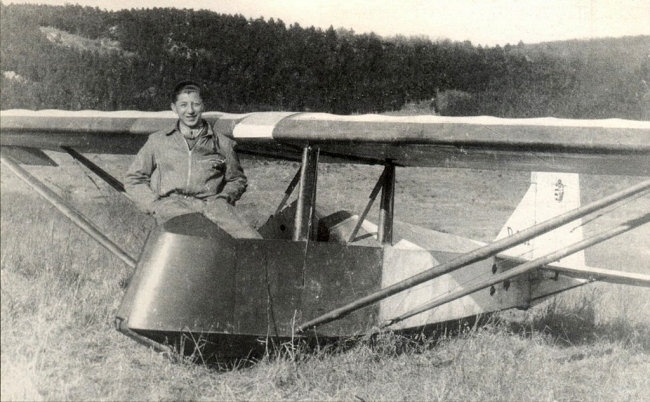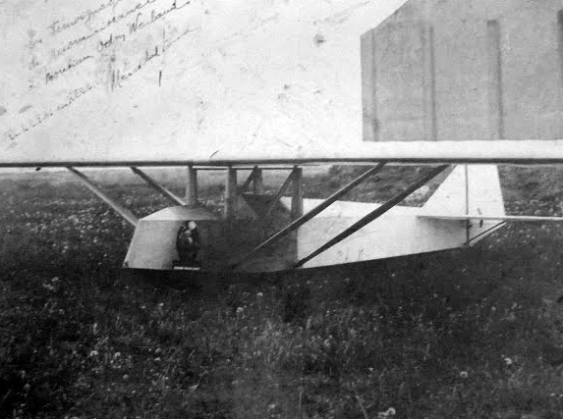I seem to have been a bit remiss with my postings lately, but I do have a good excuse: I had surgery in July and spent 8 weeks recovering in a location which was away from my computer.
To remedy this dearth of postings, I will be posting the 13th installment of CLIO’S WINGS. This is a glider history quiz which ran as a monthly column in SOARING magazine for 7 years. This particular quiz appeared in the January 2008 issue. The answers follow below.
CLIO’S WINGS #13
Glider Names
CLIO’S QUESTIONS:
- The well known glider pilot from Arizona, Joe Lincoln, owned a famous Schweizer SGS 2-32 that he called “Cibola.” What did the name mean?
- Although he probably never saw a live one, American glider designer and builder Hawley Bowlus apparently liked to name his gliders and sailplanes after the albatross. How many models did he name after this majestic sea bird?
- The American glider and sailplane builders, Schweizer, only ever named one of their models. Which one?
- The new Glasflügel HpH 304S, which is an all-new and updated 18-meter version of the old Glasflügel 304, has been given what name by its new Czech manufacturer?
- Predator
- Eagle (or the Czech version of the word)
- Shark
- Janhus
- Sting Ray
- The famous pre-war German sailplane designer, Hans Jacobs, created a sailplane that he called the “Meise,” which later became better known as the Olympia because it was chosen for the one-class competitions for the aborted 1940 Helsinki Olympics. In English, what does “Meise” mean?
- A Platypus is a duck billed, ground bound, egg laying, mammal from Australia. In addition, the English glider pilot Mike Bird uses it as his pen name. The name has also been applied to a glider. TRUE or FALSE
- If it has a ballast tube in the nose, the Slingsby Type-21 is known as what? How is it known if it does not have the ballast tube?
- The first all-metal American sailplane (not glider) was built and flown by Robert Stanley. What did he call it?
- Wanderer
- Zanonia
- Condor
- Nomad
- Texaco Eaglet
- It is customary to name military aircraft, such as the P-38 Lightning, or the C-5A Starlifter. What name did the US Army give to the WACO CG-4?
- An Italian sailplane was once named after a Disney character. TRUE or FALSE
CLIO’S ANSWERS:.
- Cibola was one of the legendary seven cities of gold that the Spanish Conquistadors sought among what have come to be known as the Pueblo Indians of Arizona and New Mexico.
- Eight. The 1929 model SP-1 Albatross (also known as the “Paper Wing”), 1929 model SP-D Albatross, the 1929 Model A Albatross, the 1930 model S-1000 Albatross, the 1933 model 1-S-2000 Albatross I, the 1934 model 1-S-2100 Albatross II, the 1938 model BA-100 Baby Albatross, and the 1939 model BS-100 Super Albatross. Approximately 113 gliders and sailplanes in total.
- The last Schweizer glider or sailplane model built, the SGS 1-36 is known as the Sprite.
- C. The HpH 304S is known as the Shark.
- In English, Meise means “titmouse” (or chickadee) which is a small woodland bird.
- TRUE. After World War II, Edmund Schneider closed his Grunau shop in Germany where he had built the famous Grunau Baby, and emigrated to Australia. Here he gave his later designs local names such as the ES-57 Kingfisher, ES-59 Kookaburra, ES-60 Boomerang, and yes, even the ES-65 Platypus.
- If the T-21 has a ballast tube in the nose, it means that it was built for the Royal Air Force’s Air Cadets program and was given the name Sedburgh, after a town in Northern England that is not far from the Slingsby factory at Kirbymoorside. If the T-21 does not have a ballast tube (and thus made for civilian use), it is known simply as the “T-21.”
- D. Stanley called his 1938 sailplane the Nomad. When he later modified the tail, it also became one of the earliest V-tailed aircraft of any kind ever built. Although the all-metal Schweizer SGU 1-6 predates the Nomad by a year, it was a “utility” glider, not a sailplane.
- This is kind of a trick question. The US Army Air Forces never gave the CG-4 a name. However, the British named it the Hadrian after the Roman emperor who had a wall built across Northern England to keep out the Caledonians (Scots).
- TRUE? Although the 1946 Politecnico di Milano design was named CVV-7 Pinocchio, it is doubtful (?) that the glider was named specifically after the 1940 Disney cartoon of the same name. Rather it was likely named after the Italian fairy tale of the same name, with perhaps a nod to Disney.
SOURCES
Anonymous. “Cibola,” Wikipedia.
Ewald, Jochen. “Aptly Named The Shark,” Gliding Kiwi, Volume 29 Number 10, April/May 2007.
Pedrielli, Vincenzo.


Recent Comments